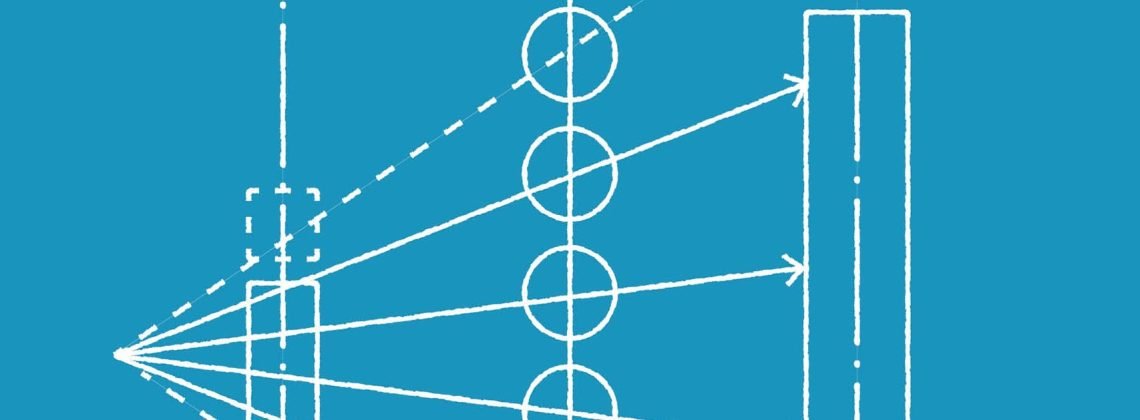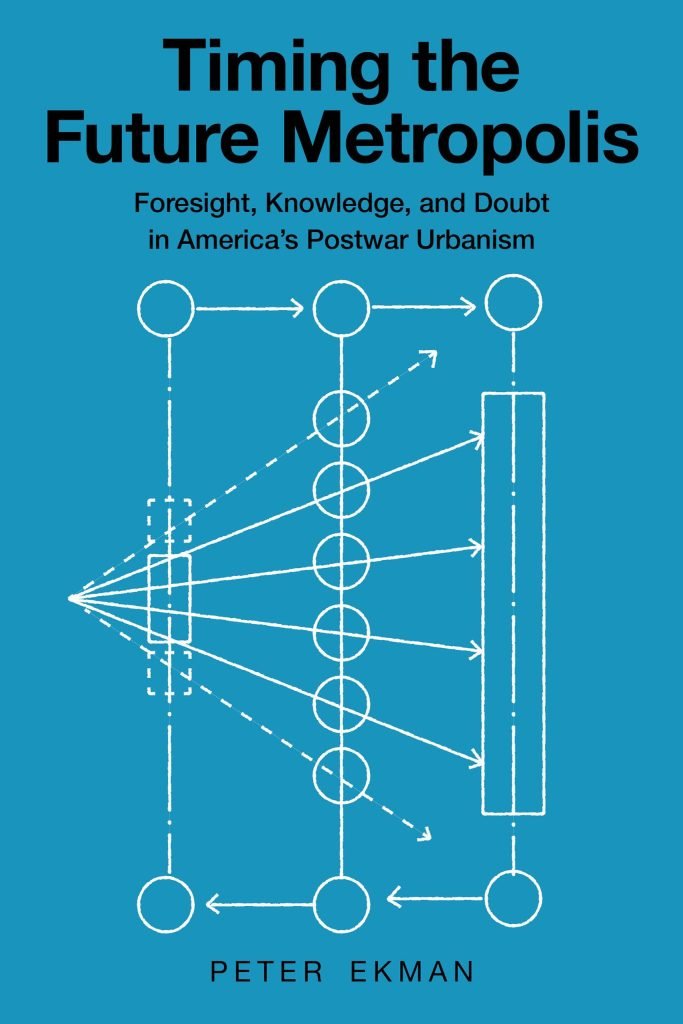

Peter Ekman is a Postdoctoral Fellow at the University of Southern California’s Center on Science, Technology, and Public Life and at the Berggruen Institute. This interview is based on his new book, Timing the Future Metropolis: Foresight, Knowledge, and Doubt in America’s Postwar Urbanism (Cornell University Press, 2024).
JF: What led you to write Timing the Future Metropolis?
PE: Several years into my Ph.D., I began to notice that quite a number of seemingly unconnected works of U.S. urban history, geography, and planning produced during the postwar period had all emerged from the publication program of one Joint Center for Urban Studies. Titles include several classic books familiar to any scholar or student of these fields: Kevin Lynch’s The Image of the City (1960), which prototyped a method by which to study cognitive mapping, wayfinding, and large-scale form; Sam Bass Warner’s Streetcar Suburbs (1962), a study of speculative edge-of-town development in late-nineteenth-century Boston; Nathan Glazer and Daniel Patrick Moynihan’s Beyond the Melting Pot (1963), a very public sociological inquiry into race and ethnicity in New York; and Robert Fogelson’s The Fragmented Metropolis (1967), one of the first decent scholarly studies of pre-automotive Los Angeles, where I am now based. I sensed that there was a deeper history of urban knowledge to explore — that, beyond and behind questions of suburbanization, Urban Renewal, deindustrialization, and all the other pillars of this country’s urban history, the subjects of so many excellent studies, we still did not fully understand postwar attempts to define the urban as an object of knowledge, lay claim to its future at a moment of pronounced transformation, and elaborate whole sets of works (and a new scholarly field, urban studies) that together promised to ground urban foresight in something like scientific method. This book, my first, centers on the Center, but through its case it narrates a far broader intellectual history of planning, urbanism.
JF: In two sentences, what is the argument of Timing the Future Metropolis?
PE: After the Second World War, an enormous range of centers, institutes, bureaus and other interdisciplinary contraptions formed, effecting new blends of urban planning and design with the methodologies of social science on the idea that better research into the city as a settlement type, past and present, would equip reliable inferences about its future development. One of these institutions, the Joint Center for Urban Studies, founded 1959 by scholars at Harvard and MIT with considerable backing from the Ford Foundation, who considered it first among equals in its efforts to seed American universities with “model” centers dedicated to things urban at a moment of perceived “crisis” and “renewal,” best discloses how this basically optimistic, future-oriented postwar network ended up incubating neoconservative forms of pessimism, doubt, and disavowal — of the urban future as de facto unknowable — that contorted urban theory and policy for the next half-century.
JF: Why do we need to read Timing the Future Metropolis?
PE: We still live in the aftermath of this history — the long shadow of Urban Renewal, the politically various critiques of planning as a basic state capacity, the numerous attempts to render “the city” an object of technical knowledge and “the urban future” as a knowable quantity. This book deals with the period before urban ecology was firmly on the agenda in any form that we would recognize today, but in a sense it establishes an intellectual prehistory for our age of widely documented (but also widely denied) climate change as it reconfigures urban life. Climate politics are a politics of time — built on projections and probabilities, maps and models, of near and far futures and their “known unknowns.”
JF: Why and when did you become an American historian?
PE: In fact, I am a geographer by training. Geography is a field in which historical work has unfortunately become marginal, but it is also an essentially interdisciplinary endeavor. Investigating American cities, I found that the most basic questions of interest to me — about why things look the way they do, rather than some other way — could not be answered except by recourse to the past. Questions of space cannot meaningfully be disentangled from questions of time. Again and again, I found myself driven into the archives.
JF: What is your next project?
PE: This book postdates my dissertation, a landscape history of industrial and otherwise non-elite suburbs planned and abandoned since the late nineteenth century on the eastern fringes of the San Francisco Bay Area. I am reimagining that project as we speak and expect to publish a book — shorter than this one — before long. Adjacent to that work, I am returning to the early thought of the Regional Planning Association of America — principally Benton MacKaye, Catherine Bauer, and Lewis Mumford, on whom I have written at some length — and, a century after that group formed in New York, cutting a new sort of path through their ideas on the flows that constitute urban life and the scales at which we can envision and redirect them. Another long-term project deals with the historical geographies of music and sound since the bulldozer, exploring how some of the most ordinary buildings and landscapes that define metropolitan America — such as street corners, garages, and basements — have given rise to particular sounds and registers of urban critique.
JF: Thanks, Peter!